Hot tub dos and don'ts: 8 essential tips to get the most from your outdoor spa
Our round-up of hot tub dos and don'ts will help you ensure a safe and relaxing experience for everyone
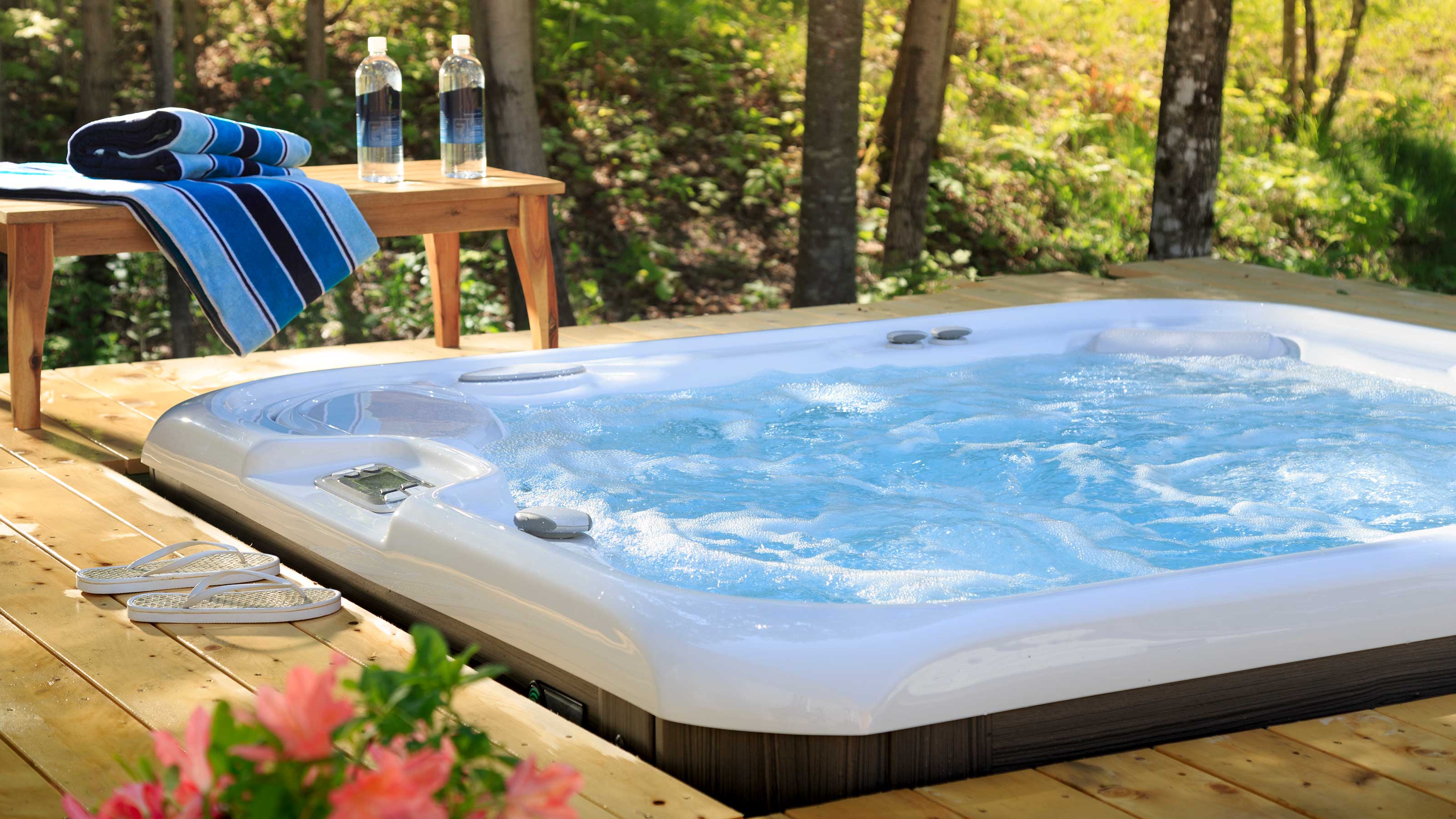

Adding an outdoor spa to your space? Knowing these hot tub dos and don'ts is a must before you get started, so you can ensure you get the absolute most from your new feature.
Hot tub ideas are almost always a good way to take a backyard up a notch. Whether you want to elevate an entertaining zone or simply have a space to relax after a long day, an outdoor spa will do the job. That is, if they're used correctly – and that's where we can help.
8 crucial hot tub dos and don'ts to consider
From maintenance, safety issues, and placement to whether or not you can add bubble bath, we've rounded up some key points to bear in mind before you invest in one of the best hot tubs.
1. Do take safety precautions in your spa
Thinking of adding a hot tub to your plot as part of your family garden ideas? Sure, it can be a good way to spend quality time together, but it's important to note that spas aren't suitable for younger children.
The team at Lay-Z-Spa does not recommend the use of hot tubs for children younger than eight. 'Children over eight years old must be supervised at all times and must be comfortably tall enough to stand on the bottom and have their heads out of the water,' they say. The time spent in the water should also be reduced – for instance, they advise that children over eight should only use a Lay‑Z‑Spa for a maximum of ten minutes at a time.
There are other safety factors to consider, too. For instance, you should seek advice from a doctor or medical professional if you are pregnant or have any kind of health condition. The Lay-Z-Spa team also advises not to drink alcohol prior to or while using your hot tub.
And although it might seem tempting, the experts at BISHTA say to never put your head underwater in a hot tub, or allow another bather to do so. 'The high water temperature can potentially lead to loss of consciousness.'
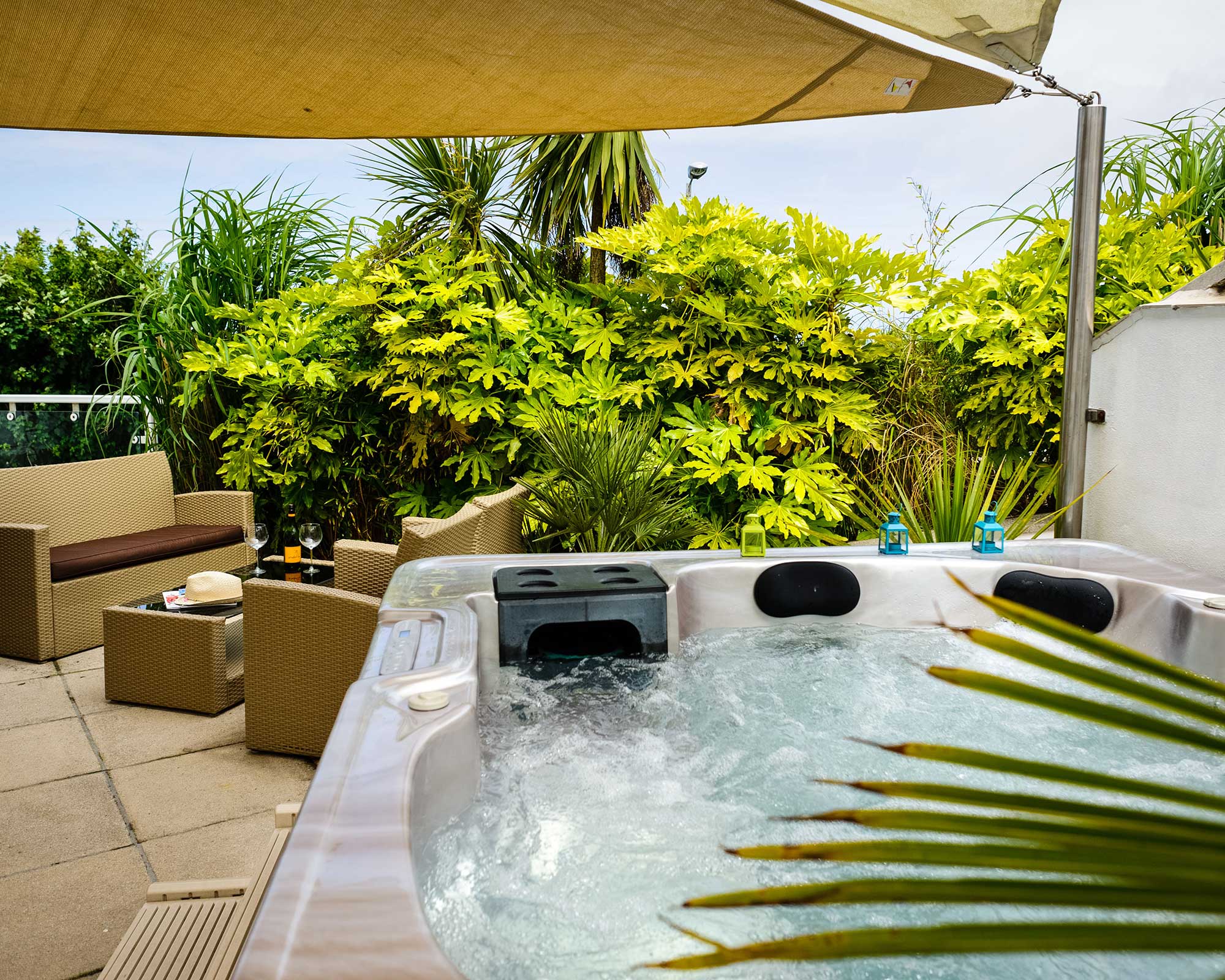
There are a few precautions to bear in mind when using an outdoor hot tub to keep everyone safe
2. Don't turn up the heat too high
On the topic of heat, BISHTA says to never use a hot tub with a water temperature higher than 104°F/40ºC. Temperatures above this can be harmful, causing overheating, dehydration, and even fainting.
'Reputable brands will be factory configured in such a way as to make this impossible, but we recommend that you keep on hand a good quality thermometer to double-check the water temperature against that showing on the hot tub's display.'
Most people find 100.4°F/38°C to be a comfortable setting.
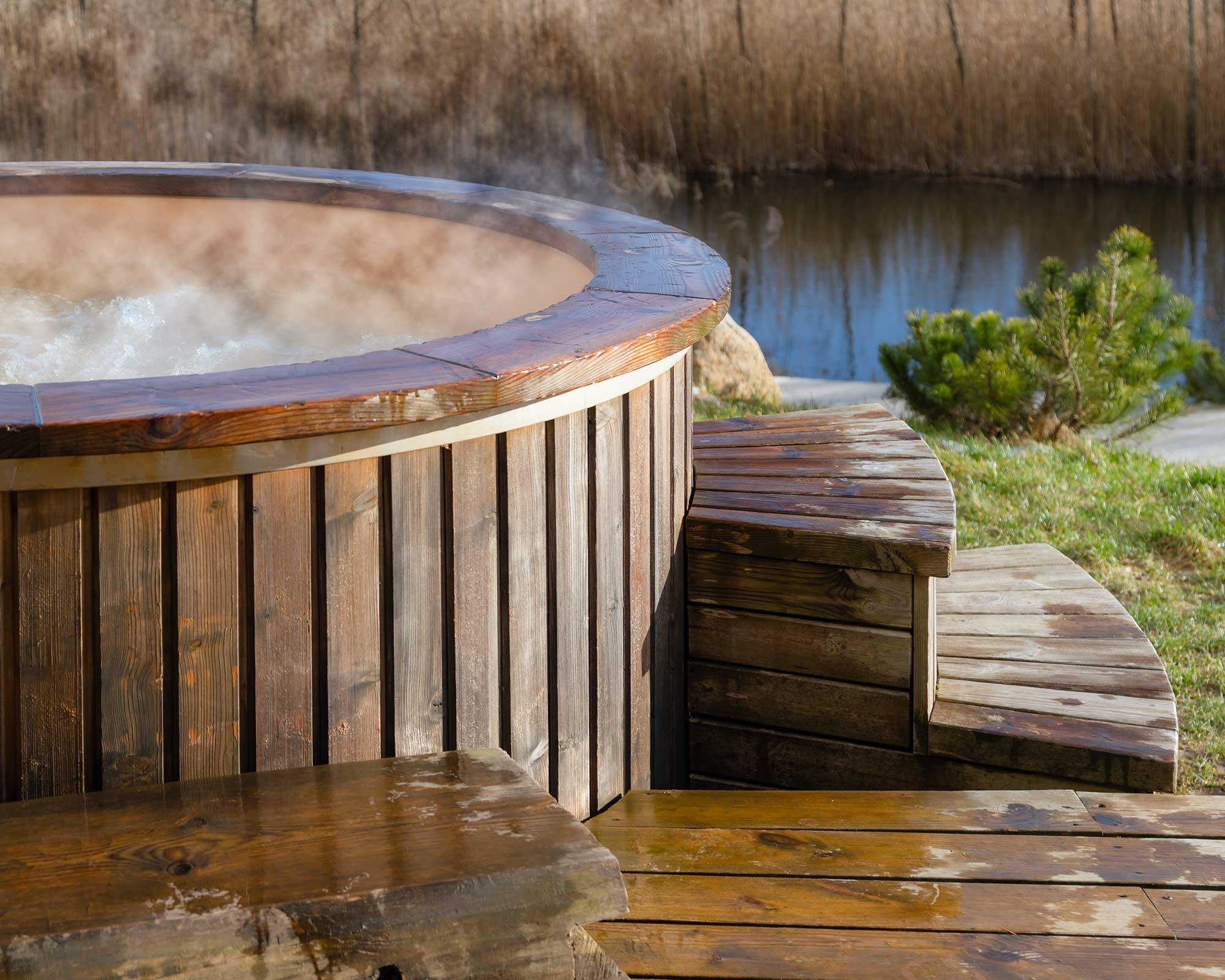
Monitor the temperature of your tub
3. Do keep on top of maintenance
It almost goes without saying that learning how to clean a hot tub and proper hot tub maintenance are key factors for getting the most from your spa. Not only will this ensure your tub lasts longer, but it will also mean your water will stay clean, which is important for safe use of the tub.
Don't assume clear water is clean water, says Lay-Z-Spa – proper maintenance is a little more complex than that. Remember to regularly replace the water and clean the whole hot tub – both inside and out, clean and change the filters frequently, and keep up with necessary testing and chemical treatments, following all product instructions carefully.
'Always treat with chemical products designed specifically for use in hot tubs,' says BISHTA. 'Never use general household cleaning products or detergents.'
BISHTA also warns to never block suction fittings or skimmers in the hot tub.
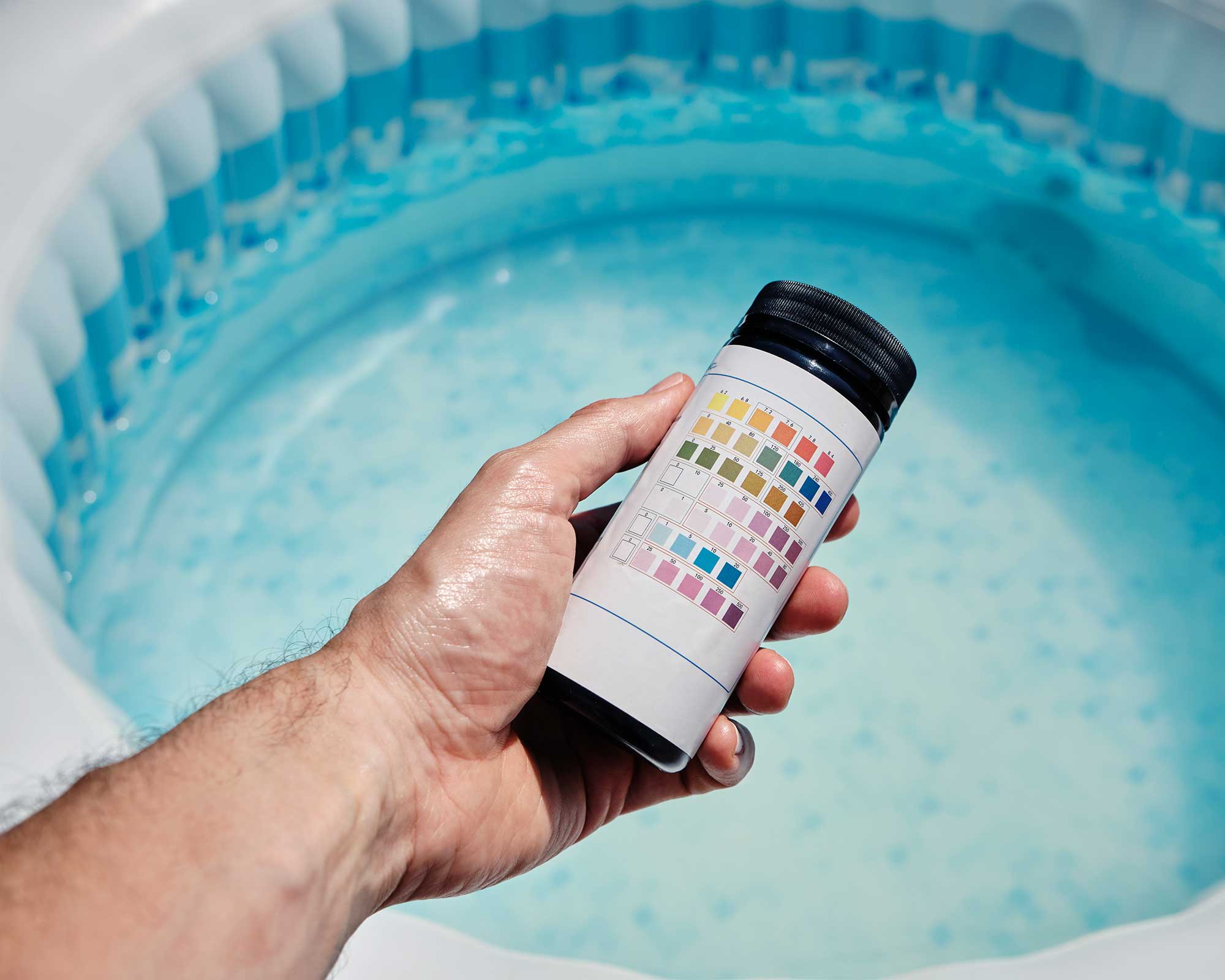
Hot tubs need regular maintenance, including checking the water quality
4. Don't buy before you try
If possible, 'make sure you try before you buy,' says BISHTA.
'Most retailers encourage you to test soak before you buy. This is the best way to ensure you choose the hot tub that is perfect for you. Each one has its own unique feel.'
When you do a wet test, note the water's depth, the seating capacity and the location of seats, and the jets' variety and power, they advise. 'Look for a hot tub with a seat deep enough to cover your shoulders; others should be high enough to let you cool down. Make sure you can stretch out and get comfortable.'
You should check the power available to each jet in each seat and how controllable that power is, too, they add.
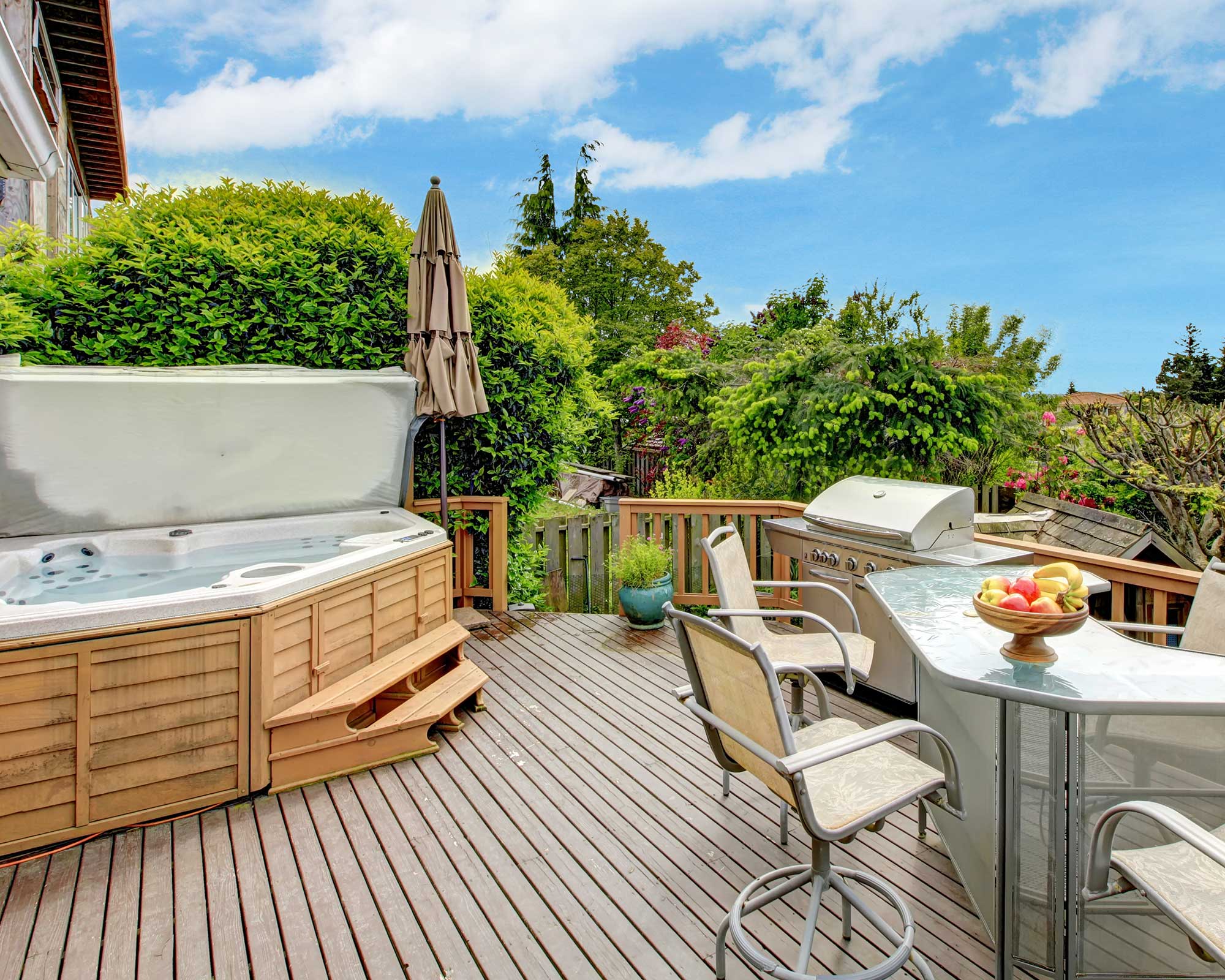
It's always a good idea to test out your tub before you install it
5. Do provide shelter overhead
From awnings and parasols to timber or louvered pergolas, adding a hot tub shelter has many benefits. Lay-Z-Spa explains how they protect the hot tub and the users from sunlight. And of course, they will keep light showers off too – so are ideal for extending the use of your tub throughout the seasons.
Hi-tech designs can also include wall lights, heaters, and even speakers for the ultimate outdoor entertaining zone. Pick a design that complements your existing garden scheme and it will be a welcome design feature, too, adding vertical interest to the space.
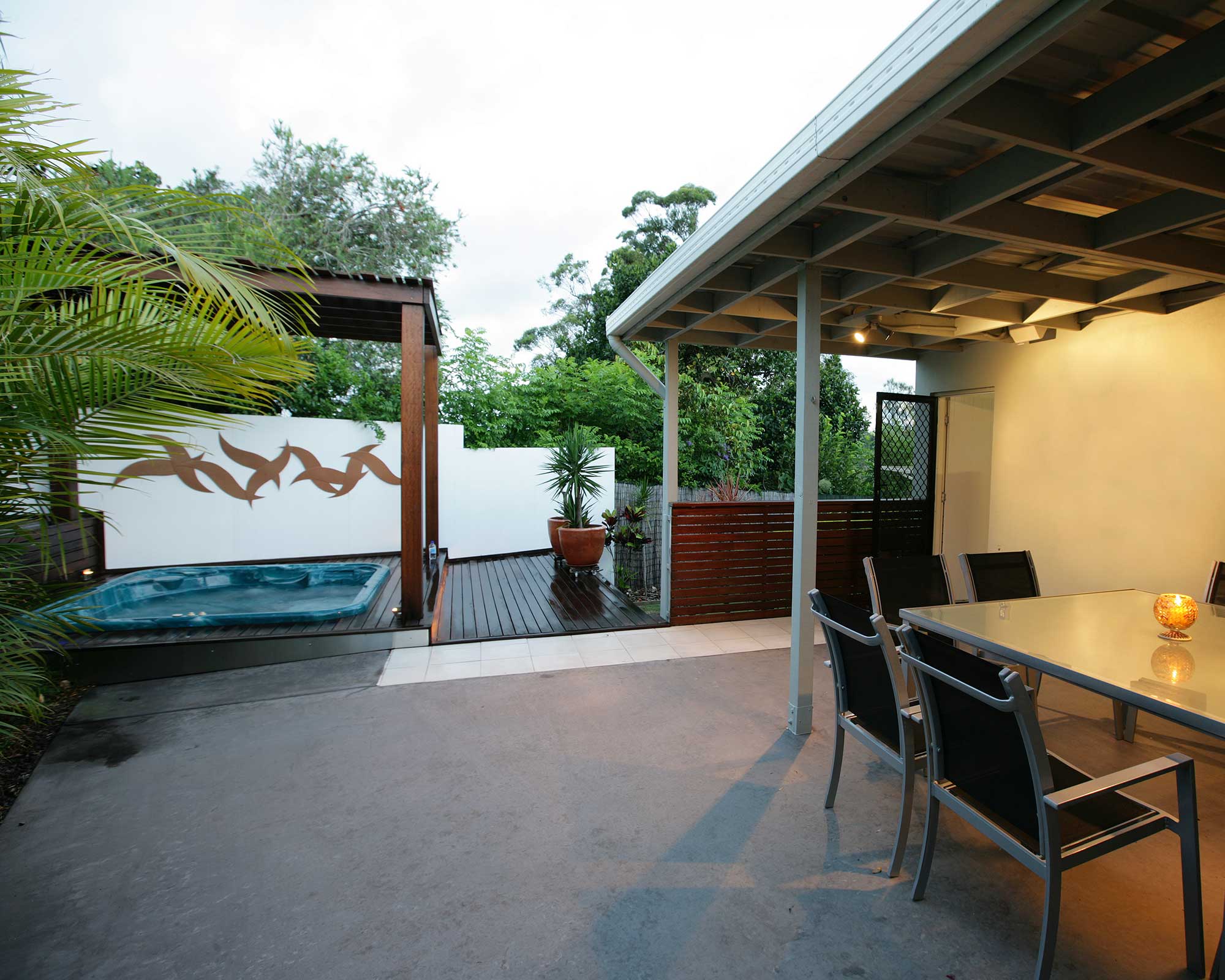
Protect your tub and yourselves from the elements
6. Don't forget about a cover
Covers are useful for reducing evaporation rates on your hot tub, and also for keeping debris and insects out. Covers are also an important part of hot tub winter care as they will help protect the interior from adverse weather.
They are also useful for safety reasons. 'Always use a cover when the hot tub is not in use to prevent unauthorized access to the water,' says BISHTA. 'Most reputable manufacturers have locking straps that can be locked using supplied keys, which should be kept away from children. Without the keys, it is not possible to gain access to the hot tub. Covers that cannot be secured are not safety covers, so ask your supplier about having one to keep children and pets safe.'
You may also want to invest in a cover lifter which will make removing and replacing the cover easier, the team continues. After all, covers can be cumbersome, particularly on large hot tubs or if the user is movement impaired.
On that note, you should always have the cover removed when using your tub. 'Never try to bathe with the cover in place over the heads of bathers,' BISHTA says.
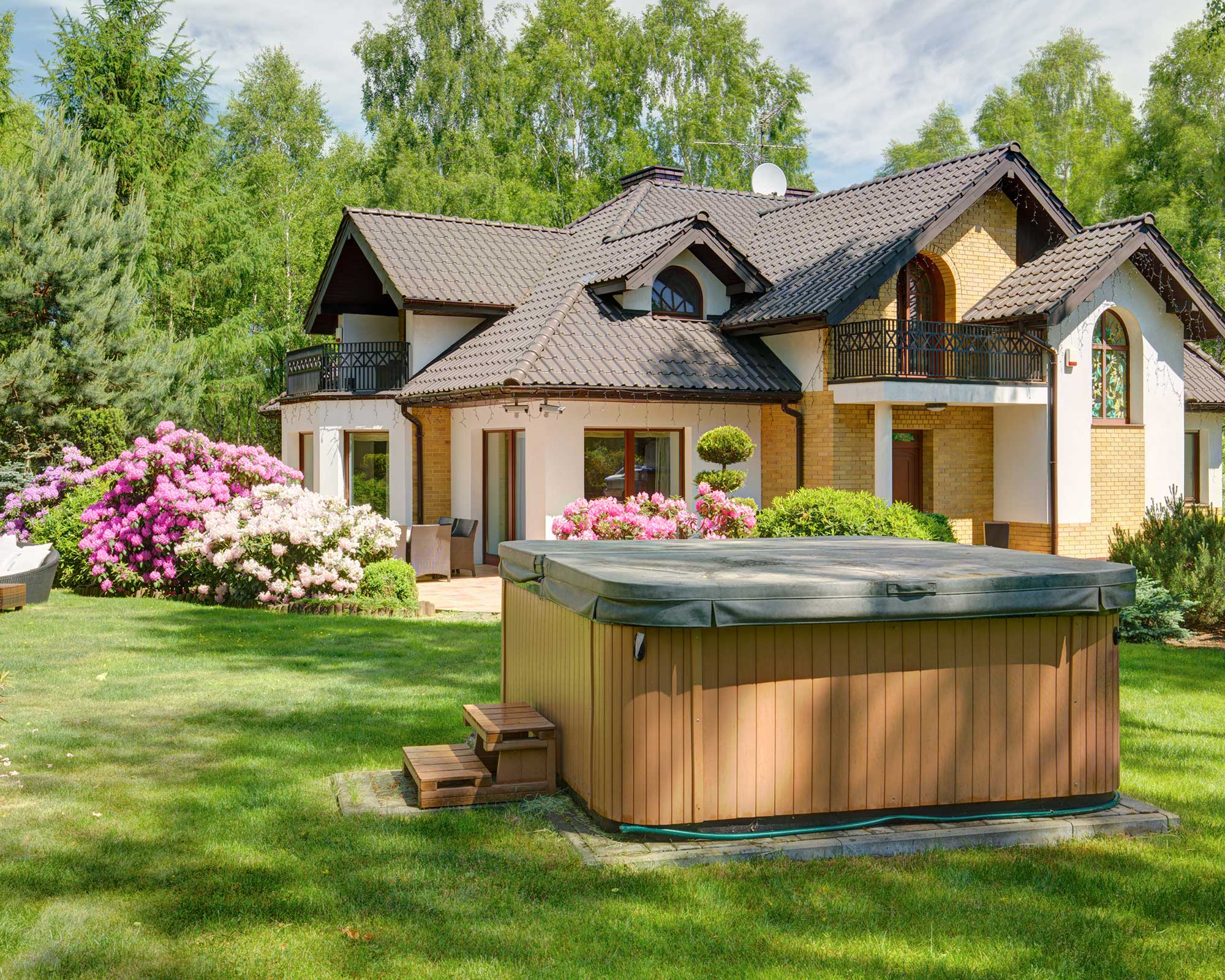
Hot tub covers have plenty of benefits
7. Do consider placement carefully
In terms of your hot tub surround ideas, there are lots of things to factor in.
Firstly, you'll want to ensure easy access, meaning you probably won't want it too far away from the house unless you have separate changing accommodation nearby. As BISHTA notes, if you're going to be using your tub for entertaining, you may want it near your outdoor dining and seating space. Alternatively, you may choose to integrate it with your swimming pool.
Other things to consider are the view from the tub, any hot tub privacy ideas that you may want to install, and outdoor lighting ideas.
'If the hot tub is to be used at night, always use the underwater light so that bathers can clearly see their safe entry point into and out of the water, and ensure that the access routes between the house and the hot tub are clearly lit as well,' says BISHTA.
If choosing an electric hot tub, you will also need a dedicated electrical outlet, BISHTA continues. A standard garden hose and nearby water supply should also be available.
They also note how you'll need a firm, level, solid surface beneath your spa, that can support the weight of your tub itself as well as the water and occupants, and any extra equipment (such as steps). 'Patios with good foundations are often possible to use, but this should always be checked with the supplier before agreeing to locate the hot tub.'
Speaking of steps, 'unless a hot tub is sunk or partially sunk into the paving or decking, always use a set of approved spa steps with nonslip treads to access the hot tub. A hot tub grab-rail can be installed at the access point and attached under the hot tub or attached to the cabinet for extra assistance.'
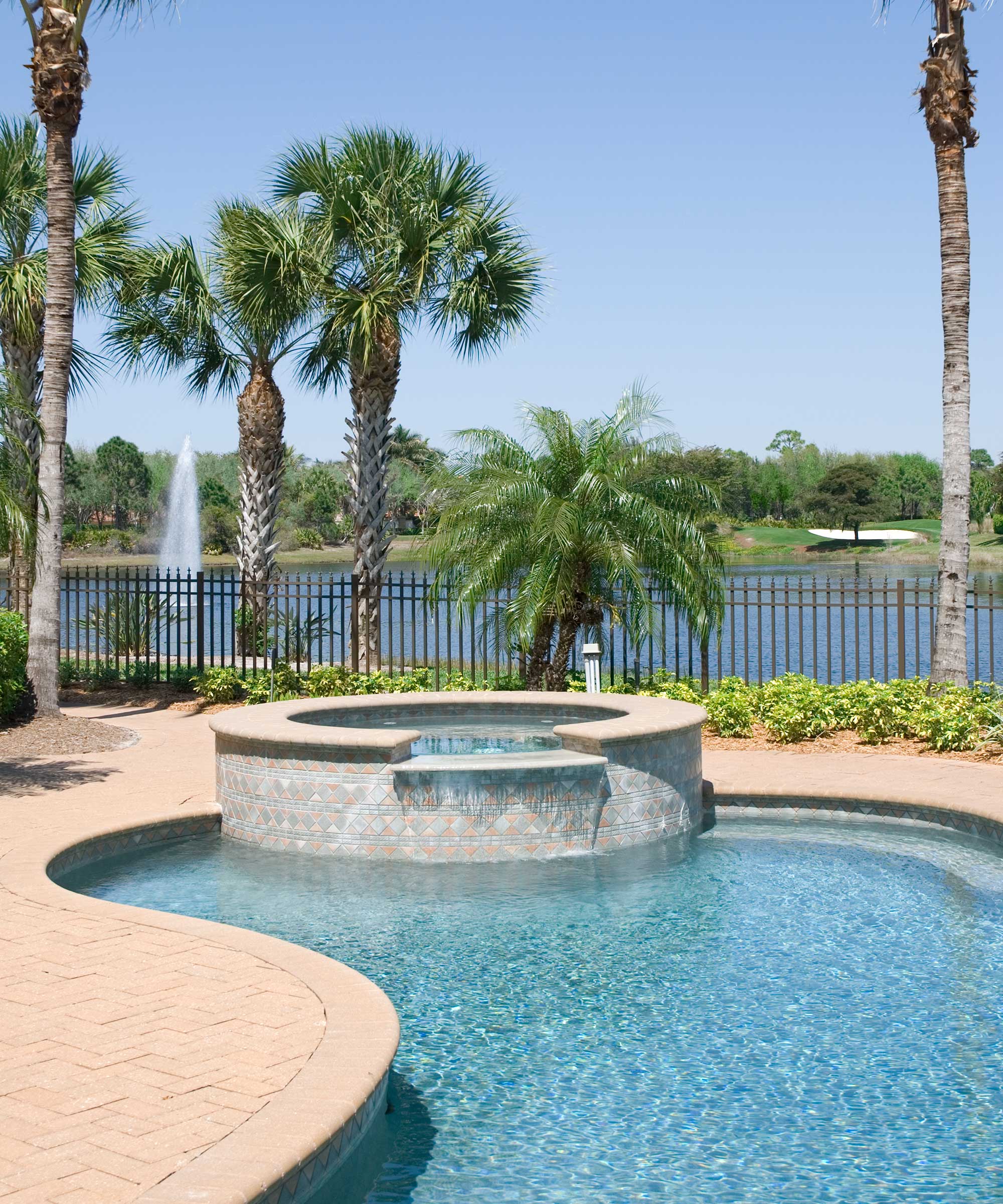
Some people choose to install their hot tub within their pool, with a soothing 'spillover' in between
8. Don't treat your hot tub like a bath tub
Hot tubs should not be treated the same as indoor bathtubs. For instance, 'you should never use soap or bubble bath in your hot tub; doing so can cause significant damage to the equipment as they are not intended to be used in this way,' says BISHTA.
You can, however, purchase specialist products to add aromatherapy scents to your hot tub that can provide a very relaxing experience, they add.
'It's also not advisable to get into your hot tub when you are dirty or sweaty, as this can wreak havoc with the hot tub filters and water balance,' they add. Installing an outdoor shower nearby is a great solution for a quick pre-soak rinse.

Avoid using bath products in your hot tub
Can you put essential oils in a hot tub?
Just as it's non-advisable to use bubble bath in a hot tub, you should also avoid adding essential oils that you would otherwise use around the home. These can quickly clog up filters and upset the balance of your spa's water.
However, as mentioned above, there are specialist products that will offer all the soothing aromatherapy benefits while being safe for your hot tub. These are available in many forms, from crystals to liquids. Some high-end hot tubs also have an in-built aromatherapy function which requires special cartridges.
To elevate the experience further, you could also plant scented blooms close to your hot tub, such as lavender or jasmine – both of which are classic picks for sensory gardens.
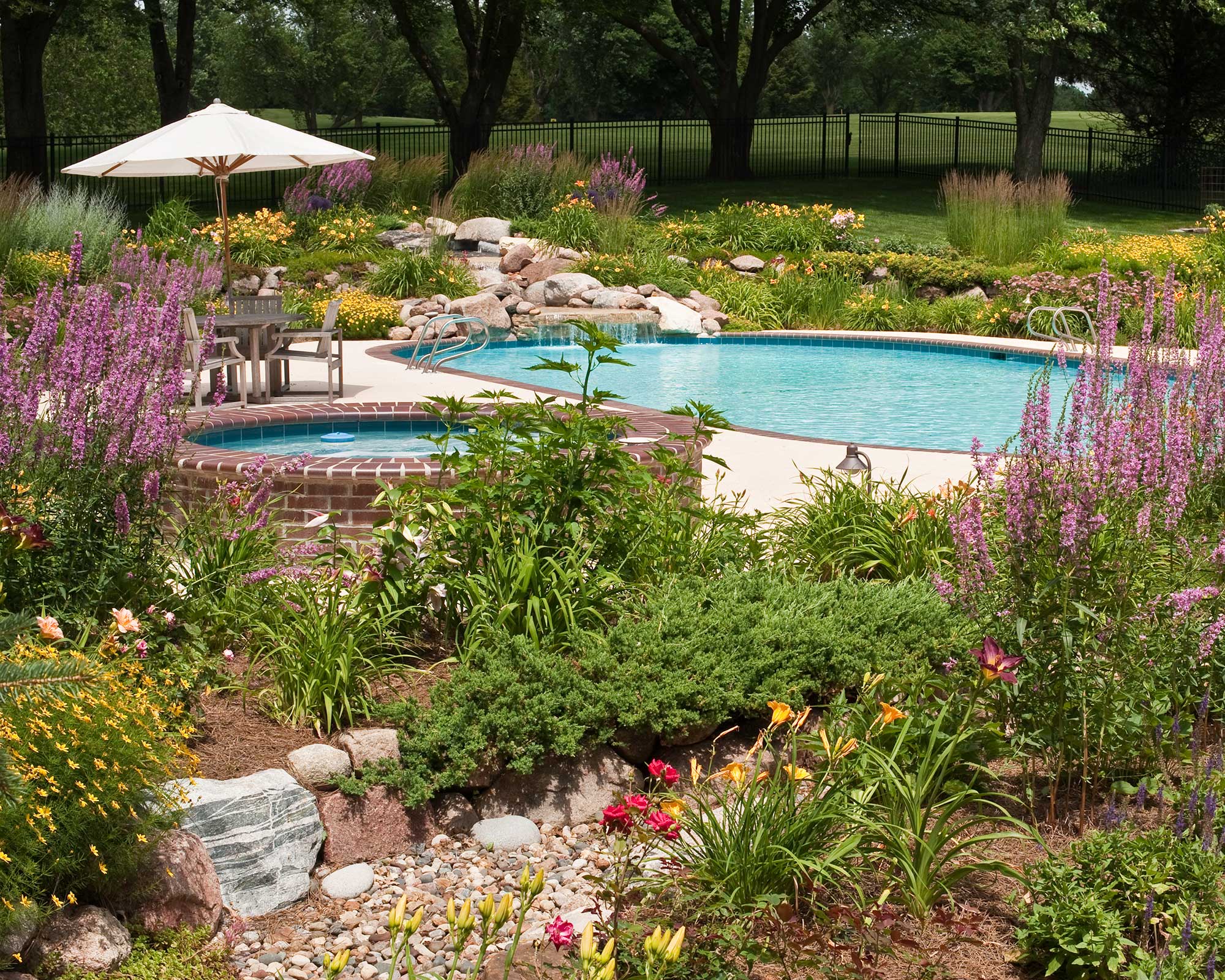
Plant billowing borders near your tub to boost the relaxing experience

The garden was always a big part of Holly's life growing up, as was the surrounding New Forest where she lived. Her appreciation for the great outdoors has only grown since then. She's been an allotment keeper, a professional gardener, and a botanical illustrator – plants are her passion.
